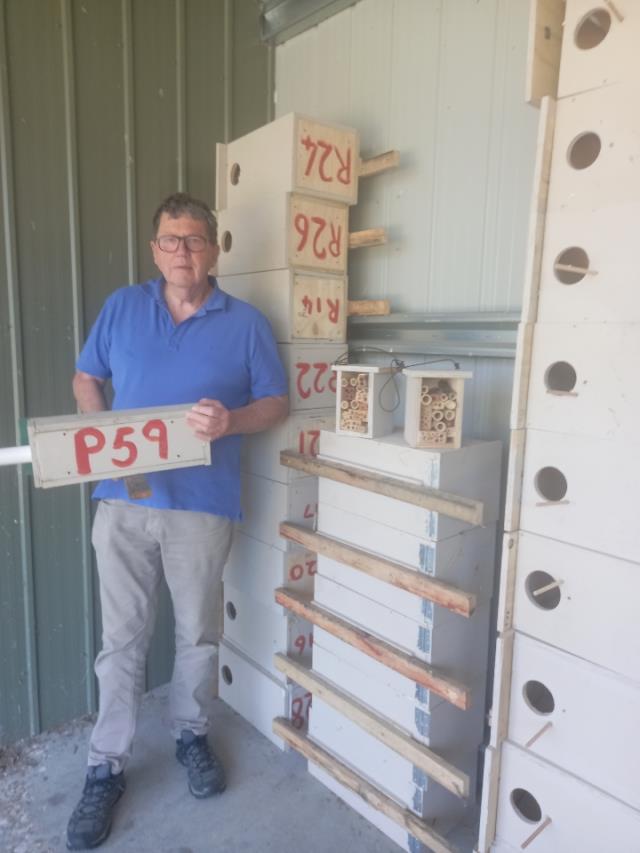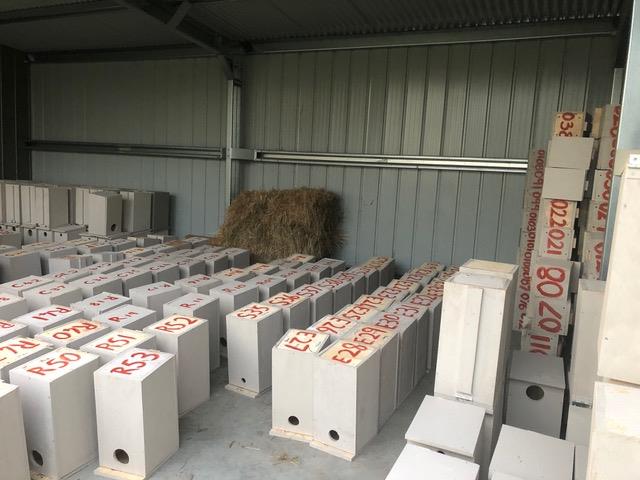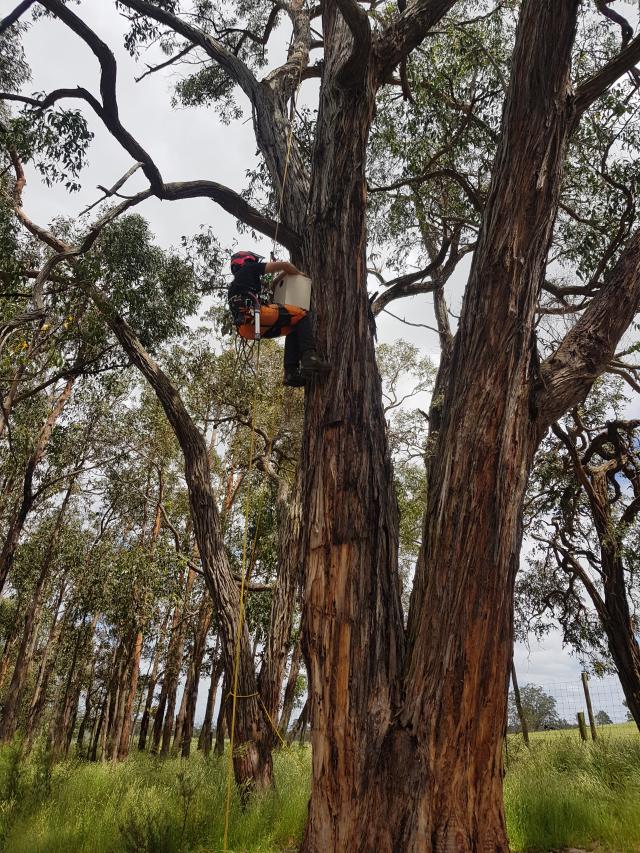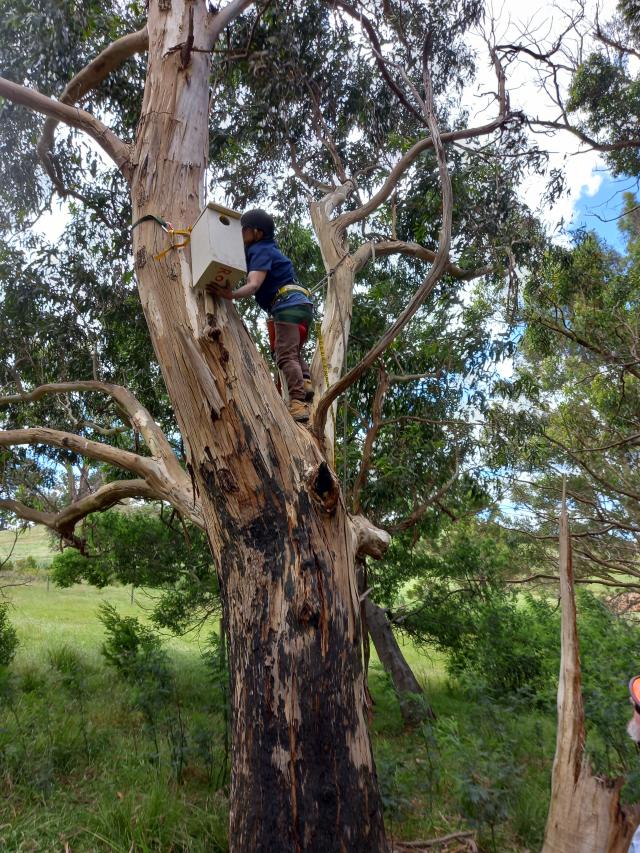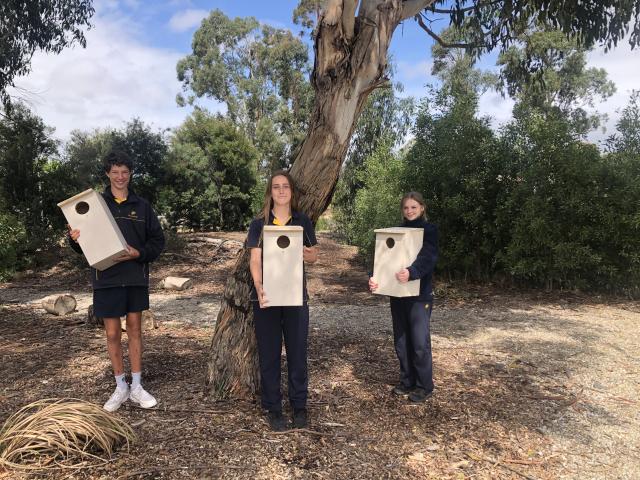
PRECEDE
The community has had a long road to recovery follow the 2019 bushfires that tore through Bunyip North, Garfield North, Tynong North and Tonimbuk. Over 300 properties were significantly impacted with 31 houses destroyed and significant areas of bushland were devastated. Animals have not been forgotten in recovery efforts with community groups most recently coming together for a nesting box project for wildlife displaced by the fires. LINDSAY MCNAUGHT, treasurer CRC and president CEC writes.
BREAKOUT QUOTE
“Several expressed the sentiment that while they entered the profession because of their love of trees, they in fact spent most of their time chopping them down so they welcomed the chance to positively contribute to biodiversity.“
A few months after the fires an offer came which was not directly aimed at helping the people but instead, the birds and animals whose habitat had been destroyed.
Mt Cannibal suffered particularly intense fire causing substantial damage to its infrastructure and devastation to the flora and fauna.
It was a similar situation for bush areas on private properties and for Bunyip State Park.
Post fire recovery of vegetation starts almost immediately with some trees producing epicormic growth to help them recover.
Other species produce vast numbers of seedlings which within a couple of years lead to impenetrable bush.
While this regeneration effectively refreshes, there are aspects which take time to recover.
Friends of Mt Cannibal (FOMC) had insect homes made by Neerim District and Labertouche Mens Sheds for distribution through the burnt areas.
The other feature which cannot regenerate quickly, by definition, is old trees.
It is old trees containing hollows which unfortunately burn best. Many species of bird and mammal are dependent on hollows as breeding or shelter sites.
Community Recovery Committee (CRC) decided to provide assistance to those species and hence the nest box project started.
A very generous donation received almost immediately from Maserati Owners Club of Australia supplemented the Community Bank funds and gave further encouragement to the project.
Designs were drawn up for nest boxes targeting a range of species, exterior grade plywood and other materials were purchased but then Covid arrived.
Virtually no progress was possible for nearly a year but then a window of opportunity allowed the sheets of plywood to be distributed.
Many Mens Sheds were no longer able to be involved due to Covid restrictions but Berwick Woodworkers Club, Labertouche Mens Shed and Upper Beaconsfield Mens Sheds between them cut all the sheets into kits according to the designs they had been provided with.
These designs were drawn up to give minimal wastage from cutting but mainly to cater for the requirements of the different species which were targeted.
Nominally the species were kookaburras, pardalotes, owlet nightjars, crimson rosellas, eastern rosellas, sugar gliders and ringtail possums. Each species required boxes of a different size.
The aperture to allow entry varied in size. For example, the sugarglider and pardalote boxes have apertures through which most species could not fit.
There are perches on those boxes which are targeting birds.
They are all painted in off white Weathershield paint, generously donated by Dulux Australia, to reflect the sun. Because the breeding happens in summer, it is protection against heat which is needed, not against cold. For this reason also, ply used is 15mm thick to give insulation.
Also, when installed, they have orientation such that the aperture is facing roughly south-east. Painting of the boxes when completed also is aimed at increasing longevity.
The Bolt Place in Pakenham and Bunnings both helped with some of the hardware.
Some of the boxes were assembled by Berwick Woodworkers.
For most, the kits were delivered to the two campuses of Beaconhills College.
Students from various year groups undertook the assembly and painting which included gluing and screwing the boxes together and students also fitted hinges to the lids.
Each box was also given a unique number painted on its base to allow identification from the ground.
The boxes would all ideally be installed at about 5 metres of height which is higher than even CFA members are permitted to go on ladders because of OH and S rules.
The only option available was to recruit climbers to install the boxes.
Contact was made with their Victorian Tree Industry Organisation president Shane Hall who arranged an opportunity for the Nestbox Project to be presented at one of their events.
From that presentation, many of the foremost climbers were eager to support the project.
Several expressed the sentiment that while they entered the profession because of their love of trees, they in fact spent most of their time chopping them down so they welcomed the chance to positively contribute to biodiversity.
Delays and rescheduling were caused by each lockdown but the installations finally happened on the last weekend of November.
As they installed each box, the property owner recorded the GPS co-ordinates. Installation was over both days and accommodation was arranged with property owners.
Tonimbuk Hall was the venue on the Saturday night for a meal for arborists and property owners.
A project of this size offers an opportunity for research. Over the years, various designs of nest box have been installed but there is nothing more than anecdotal data indicating how worthwhile they are.
The unique numbering and recording of the location in this project allows for subsequent monitoring and reporting.
With the aim of producing meaningful data on usage of the boxes, the project passed from CRC to Cardinia Environment Coalition (CEC).
A greatly appreciated grant from the Board of Highways and Byways Charity led to the purchase of a pole camera to assist with data collection.
It allows the operator to remain on the ground and view what is happening inside each box five metres up by focusing the camera through the aperture.
This operation will be performed by the CEC Project Officer who has the necessary knowledge of all potential users of the nest boxes to identify them with minimal disruption.
Funding received from Emergency Management Victoria (EMV) which covered a partial payment to the arborists will also fund part of this monitoring. Both CRC and CEC are grateful to EMV and to Cardinia Shire for facilitating this payment.
The monitoring will occur once a year for three or four years after which time a report will be made publicly available.
It might be that undesired species such as bees or feral birds like Indian Mynahs use the boxes. If that is the case, it should be known.
However, we do expect that the native birds and mammals will in fact turn out to be the main beneficiaries.
Indeed, at the time of this being written which is one week after installation, a property owner has just reported a kookaburra “taking up guard” for more than an hour on a box designed for kookaburras. The report will be interesting!
Thanks are due to the Community Banks, Maserati Owners Club of Australia, Dulux Australia, Community Recovery Committee, Berwick Woodworkers Club, Labertouche Mens Shed, Upper Beaconsfield Mens Shed, many students and staff from Beaconhills College Berwick and Pakenham campusses, Highways and Byways Board, Cardinia Shire Council, Emergency Management Victoria, VTIO and all the arborists who installed the boxes, property owners for making their bush areas available and permitting future monitoring visits, Committee of CEC and family and friends who helped along the way.

